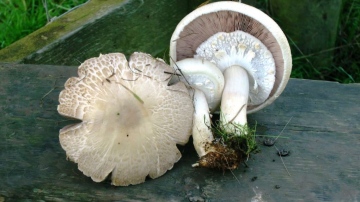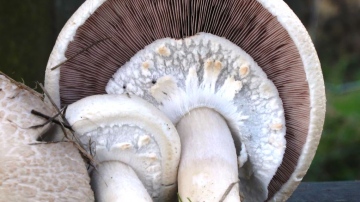Your Forum
This forum has now been more or less replaced by the Club's Facebook page at
The weblog below is for naturalists to use to report interesting sightings, ask questions, report on field meetings and generally post pictures and any information or questions generally relevant in some way to the wildlife and geology of Essex. You will need to
register and be
logged-on to post to the forum, and you need to upload pictures first, for use in posts.
Find out more
November 3rd - 9th
Two wildfowlers were shooting on Bridgemarsh Island when we completed the monthly WeBS count between North Fambridge and Althorne on Friday. My head tells me that I have no objection to wildfowling when it is carried out responsibly; and many wildfowling clubs do behave responsibly - insisting on the use of steel rather than lead shot, implementing bag limits, and improving habitats. The last may be done to improve their shooting but it also benefits wildlife as well. I dislike the use of baited flight ponds on farms, which are leased - more often than not - to clubs whose membership consists mostly of city types who roll up in their 4x4s, sit behind blinds in their posh new Barbours and slaughter gullible young Teal that circle round and round like plastic ducks on a fairground stall (I have heard of 30-40 being shot in a single evening) and then drive back to the City, with 'duck shooting' now on their CV's! But anyone who is prepared to sit for hours on the edge of the saltings during a freezing January dawn or dusk probably deserves a few birds for the pot - or so my head tells me - and you hope they main gain something more from the experience than the killing a few birds. And yet! Why is it then that whenever I hear a gun go off I swing round and scan the sky for a falling bird or the sight of a gundog running across the marsh and when neither is evident sigh with relief. He missed! At times too I am inwardly screaming at approaching birds - who are unaware of the guns below - to gain height; my relief almost audible when they do, my heart sinking when they do not and I see a bird fall. The truth is I cannot understand why anyone would want to kill anything unless they are hungry or defending their crops. Wildlife in general and birds in particular have brought great joy to my life and I have lost count of the number of times during the past fifty years when I have crawled on my belly up an Essex seawall in order to view the wildfowl in a creek beyond as they bathe and preen, squabble and socialize, and then to creep away again unseen. You feel privileged. And, heaven's above, there is but a morsel of flesh on a Teal - barely enough to cover a slice of toast; why on earth would you want to kill something that moments before was vibrant with life. Sad. So much for my head!
That apart, we had an enjoyable walk. Grassland fungi have been thin on the ground (so to speak) this autumn but today there were large numbers of Agaricus mushrooms fruiting along the seawall. At first sight they appeared to be the common Horse Mushroom A, arvense but the ones I took home for my tea keyed out as the much scarcer Agaricus fissuratus, a species that is very closely related to it but which DNA studies have shown to be separate.


The distinctive orange-buff cap with radial cracks just beginning to appear can be clearly seen on the photographs; so too the large ring with yellow-brown cogs on the underside. Not so obvious is the bulbous base to the stem. Geoffrey Kibby, in his book on the Genus, states that it is most often found on woodland margins and in parkland but he also mentioned, at the recent Russell Wallace conference at Wat Tyler, that very few studies have been made of grazing marsh fungi, where these were growing. He would probably be fascinated to know that Wood Blewits also occur in the meadows at Blue House! |
|
Archives:
May 2020
Aug 2019
Jan 2019
Sep 2018
Jul 2016
Oct 2015
Jul 2015
May 2015
Apr 2015
Mar 2015
Feb 2015
Jan 2015
Dec 2014
Oct 2014
Sep 2014
Aug 2014
Jul 2014
May 2014
Apr 2014
Mar 2014
Feb 2014
Jan 2014
Dec 2013
Nov 2013
Sep 2013
Aug 2013
Jul 2013
Jun 2013
May 2013
Apr 2013
Mar 2013
Feb 2013
Jan 2013
Dec 2012
Nov 2012
Oct 2012
Sep 2012
Aug 2012
Jul 2012
Jun 2012
May 2012
Apr 2012
Mar 2012
Feb 2012
Jan 2012
Dec 2011
Nov 2011
Oct 2011
Sep 2011
Aug 2011
Jul 2011
Jun 2011
May 2011
Apr 2011
Mar 2011
Feb 2011
Jan 2011
Dec 2010
Nov 2010
Oct 2010
Sep 2010
Aug 2010
Jul 2010
Jun 2010
May 2010
Apr 2010
Mar 2010
Feb 2010
Nov 2009
Oct 2009
Aug 2009
Jul 2009
Jun 2009
May 2009
Apr 2009
Mar 2009
Feb 2009
Jan 2009
Nov 2008
Oct 2008
Sep 2008
Aug 2008
Jul 2008
Jun 2008
May 2008
Apr 2008
Mar 2008
Feb 2008
Jan 2008
Dec 2007
Nov 2007
current posts
|



















